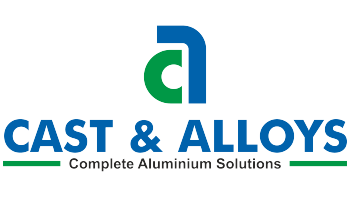Introduction
Aluminum forging is a critical manufacturing process used across various industries because it produces high-strength, lightweight components. This article delves into the intricacies of aluminum forging, exploring its types, benefits, applications, and prospects.
Table of Contents
- Introduction to Aluminum Forging
- History of Aluminum Forging
- Types of Aluminum Forging Processes
- Open Die Forging
- Closed Die Forging
- Ring Rolling
- Precision Forging
- Benefits of Aluminum Forging
- Strength and Durability
- Lightweight Properties
- Cost-Effectiveness
- Versatility
- Aluminum Alloys Used in Forging
- Common Alloys
- Properties of Different Alloys
- Applications of Aluminum Forging
- Automotive Industry
- Aerospace Industry
- Construction Industry
- Electrical and Electronics Industry
- Sports Equipment
- The Forging Process Explained
- Initial Design and Material Selection
- Heating and Shaping
- Cooling and Finishing
- Technical Specifications and Standards
- Industry Standards
- Quality Control Measures
- Challenges in Aluminum Forging
- Material Handling Issues
- Cost of Equipment
- Technological Barriers
- Innovations in Aluminum Forging
- Advanced Forging Techniques
- Automation and Robotics
- Sustainability and Eco-Friendly Practices
- Future Trends in Aluminum Forging
- Increased Use of AI and Machine Learning
- Enhanced Alloy Development
- Integration with Other Manufacturing Processes
- Comparative Analysis with Other Forging Materials
- Steel vs. Aluminum Forging
- Titanium vs. Aluminum Forging
- Expert Insights
- Interviews with Industry Leaders
- Future Predictions
- Case Studies
- Successful Implementation in Automotive
- Aerospace Advancements
- Frequently Asked Questions (FAQs)
- What is aluminum forging?
- Why choose aluminum over other metals?
- How does aluminum forging improve product performance?
- Conclusion
Introduction to Aluminum Forging
Aluminum forging is a metalworking process that involves shaping aluminum using localized compressive forces. The resulting products are known for their superior strength, durability, and lightweight properties, making aluminum forging a preferred method for manufacturing high-performance components.
History of Aluminum Forging
The history of aluminum forging dates back to the early 20th century when advancements in metallurgy and industrialization led to the development of new forging techniques. Initially used in military applications, aluminum forging has evolved significantly, becoming a cornerstone in industries like automotive, aerospace, and construction.
Types of Aluminum Forging Processes
Open Die Forging
Open die forging involves deforming aluminum between multiple dies that do not completely enclose the material. This process is ideal for producing large, simple shapes.
Closed Die Forging
Closed die forging, also known as impression die forging, uses two or more dies that contain the shape of the final product. This process allows for more complex geometries and tighter tolerances.
Ring Rolling
Ring rolling is a specialized type of forging used to produce seamless rings with a high strength-to-weight ratio. It is commonly used in aerospace and automotive applications.
Precision Forging
Precision forging involves the use of advanced techniques to achieve near-net shapes with minimal machining. This process is essential for manufacturing high-precision components.
Benefits of Aluminum Forging
Strength and Durability
Forged aluminum parts exhibit excellent mechanical properties, including high strength and durability, making them suitable for demanding applications.
Lightweight Properties
Aluminum is inherently lightweight, which translates into significant weight savings without compromising structural integrity.
Cost-Effectiveness
Aluminum forging is cost-effective due to its high material utilization and reduced machining requirements.
Versatility
The versatility of aluminum forging allows for the production of a wide range of shapes and sizes, catering to various industry needs.
Aluminum Alloys Used in Forging
Common Alloys
Common aluminum alloys used in forging include 6061, 7075, and 2024. Each alloy has distinct properties that make it suitable for specific applications.
Properties of Different Alloys
- 6061: Known for its excellent mechanical properties and weldability.
- 7075: Offers high strength and is commonly used in aerospace applications.
- 2024: Known for its high fatigue resistance and is widely used in structural components.
Applications of Aluminum Forging
Automotive Industry
In the automotive industry, aluminum forging is used to produce components such as suspension parts, wheels, and engine blocks, contributing to weight reduction and improved fuel efficiency.
Aerospace Industry
The aerospace industry relies on forged aluminum for critical components like landing gears, structural frames, and engine parts due to its high strength-to-weight ratio.
Construction Industry
In construction, forged aluminum parts are used for structural applications, including beams and supports, due to their durability and corrosion resistance.
Electrical and Electronics Industry
Forged aluminum is used in the electrical and electronics industry for components such as connectors and heat sinks, owing to its excellent conductivity and thermal properties.
Sports Equipment
Aluminum forging is also prevalent in the production of sports equipment, such as bicycle frames and golf clubs, where lightweight and high strength are crucial.
The Forging Process Explained
Initial Design and Material Selection
The forging process begins with the design phase, where engineers determine the material and shape of the part. The selected aluminum alloy must meet the required mechanical properties.
Heating and Shaping
The aluminum billet is heated to a specific temperature to make it malleable. It is then shaped using forging dies under high pressure.
Cooling and Finishing
After shaping, the forged part is cooled and undergoes finishing processes such as machining and heat treatment to achieve the desired specifications.
Technical Specifications and Standards
Industry Standards
Aluminum forging must comply with industry standards, such as ASTM and SAE, to ensure quality and performance.
Quality Control Measures
Quality control in aluminum forging involves rigorous testing, including non-destructive testing (NDT) and mechanical property evaluation, to ensure parts meet specifications.
Challenges in Aluminum Forging
Material Handling Issues
Handling aluminum during the forging process can be challenging due to its high thermal conductivity and low melting point.
Cost of Equipment
The high cost of forging equipment and dies can be a barrier to entry for some manufacturers.
Technological Barriers
Advancements in forging technology require continuous investment in research and development to stay competitive.
Innovations in Aluminum Forging
Advanced Forging Techniques
Innovative forging techniques, such as isothermal forging and powder metallurgy, are enhancing the capabilities of aluminum forging.
Automation and Robotics
Automation and robotics are increasingly being integrated into forging processes to improve efficiency and reduce labor costs.
Sustainability and Eco-Friendly Practices
Sustainable practices, including recycling and energy-efficient processes, are becoming more prevalent in aluminum forging.
Future Trends in Aluminum Forging
Increased Use of AI and Machine Learning
AI and machine learning are expected to revolutionize aluminum forging by optimizing processes and predicting material behavior.
Enhanced Alloy Development
The development of new aluminum alloys with improved properties will expand the applications of aluminum forging.
Integration with Other Manufacturing Processes
Aluminum forging is likely to be increasingly integrated with other manufacturing processes, such as additive manufacturing, to create hybrid components.
Comparative Analysis with Other Forging Materials
Steel vs. Aluminum Forging
Aluminum forging offers advantages over steel in terms of weight and corrosion resistance, though steel remains superior in terms of strength.
Titanium vs. Aluminum Forging
Titanium forging provides higher strength-to-weight ratios than aluminum but at a significantly higher cost.
Expert Insights
Interviews with Industry Leaders
Industry leaders highlight the importance of innovation and quality control in maintaining competitiveness in aluminum forging.
Future Predictions
Experts predict that advancements in materials science and automation will drive the future of aluminum forging.
Case Studies
Successful Implementation in Automotive
Case studies in the automotive sector demonstrate the benefits of aluminum forging in reducing vehicle weight and improving fuel efficiency.
Aerospace Advancements
In the aerospace industry, forged aluminum components have contributed to enhanced performance and safety in aircraft.
Frequently Asked Questions (FAQs)
What is aluminum forging?
Aluminum forging is a manufacturing process where aluminum is shaped by compressive forces to produce high-strength, lightweight components.
Why choose aluminum over other metals?
Aluminum is chosen for its lightweight properties, excellent strength-to-weight ratio, corrosion resistance, and cost-effectiveness.
How does aluminum forging improve product performance?
Forged aluminum parts offer superior mechanical properties, including high strength and durability, which enhance the performance and longevity of products.
Conclusion
Aluminum forging is a vital process in modern manufacturing, offering numerous benefits across various industries. As technology advances, aluminum forging will continue to evolve, driving innovation and efficiency in the production of high-performance components.



